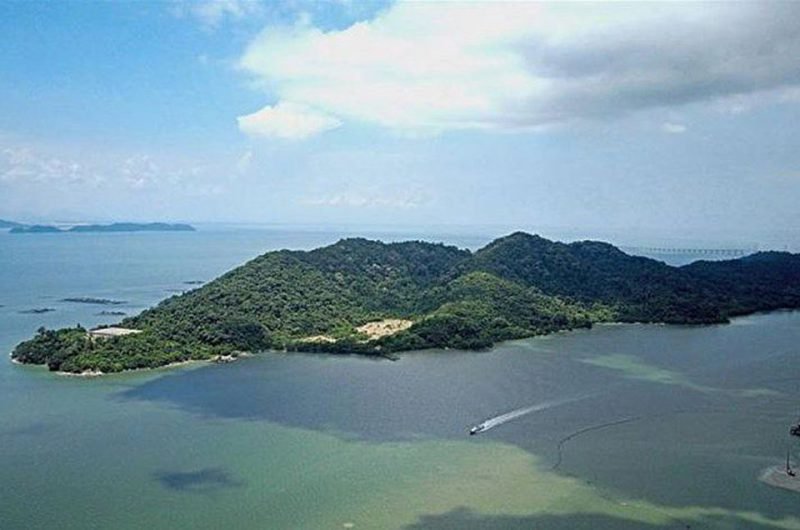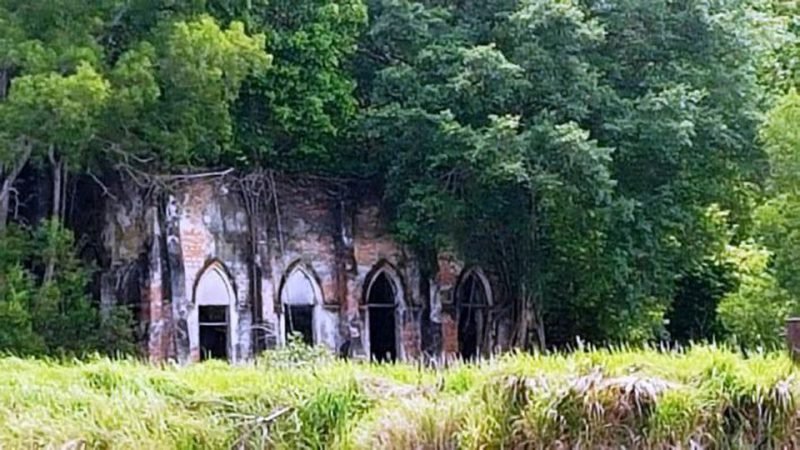(Adapted from original article in Forbes by Jim Dobson)
Many people have not heard of Pulau Jerejak, much less visited the place, but it will soon be well-known as the latest holiday destination in Malaysia.
The tiny island of Jerejak located off the coast of Penang in Malaysia is filled with some of the most dramatic events in history. Long used as a leper colony, sanitarium and Alcatraz-style prison, the island is about to experience a dramatic change. At first glance, the island is lush and empty with old crumbling buildings and dense forests, but when you take a closer look, you will find that the island contains more history than any other location in Malaysia. Surrounding Pulau Jerejak are hundreds of beautiful islands, but not all offer overnight accommodation.

Photo of Jerejak Island by Zainudin Ahad
Recently, a group consisting of several of Malaysia’s biggest developers have announced their plans to build a luxurious Rainforest Resort & Spa along with a theme park, marina, residences and more on Pulau Jerejak. UDA Holdings and Ideal Property in Penang announced that it had entered a joint-venture (JV) agreement with another company to redevelop a portion of the tiny island, which will include 1,200 residential units, a theme park, a marina, hotels, and a cycling track.
Earlier this year, the Penang Island City Council approved the plans to demolish the existing buildings to make way for the resort, with the condition that development does not destroy the island’s forest reserves. In 2004, a resort was previously built where the leprosarium once stood, but the resort went out of business in 2016. Pulau Jerejak had been a matter of controversy between conservationists and the state government, but in 2015, the state government approved the sale of an 80-acre lot on the island to private developers.

Ruins of a Roman Catholic church on Pulau Jerejak (Photo from Heritage)
The leper colony on Jerejak was established in 1868, and at one time hosted more than 7,000 lepers. Before its independence, tuberculosis (commonly referred to as TB) hit Penang and patients were rounded up and sent to Jerejak together with the lepers. The Sanitorium was located on the opposite side of the island and in 1875 part of the island was converted into a health quarantine center for immigrants at the eastern and northern parts of the island. At some point, every immigrant entering Penang and Singapore had to be processed and screened for diseases on Jerejak, and every Muslim who went to Mecca for haj were required to be quarantined there.

The leper hospital opened in Pulau Jerejak in 1871 (Photo from National Heritage Department)
In 1969, the lepers were transferred to Sungai Buloh, and Jerejak became the Alcatraz Island of Malaysia with a maximum security prison for political prisoners and dangerous drug dealers, which ultimately closed in 1993.

Electric car (Photo from Pixabay)
The new development comes with mixed blessings for the community and for the economy with new tourism dollars and enhanced infrastructure on the tiny island. According to Penang Chief Minister Chow Kon Yeow, the development agreement also includes “a bridge from Penang to Jerejak which would allow for electronic cars only since the island does not have the capacity for normal vehicles.”
We’re pretty sure it will be a hit with locals and overseas tourists alike, plus it will be a nice change from the crowded streets of Penang if you’re looking for a relaxing vacation spot. In the meantime, check out our list of the best Malaysian islands for vacation if you can’t wait for sun, sand, and sea!





